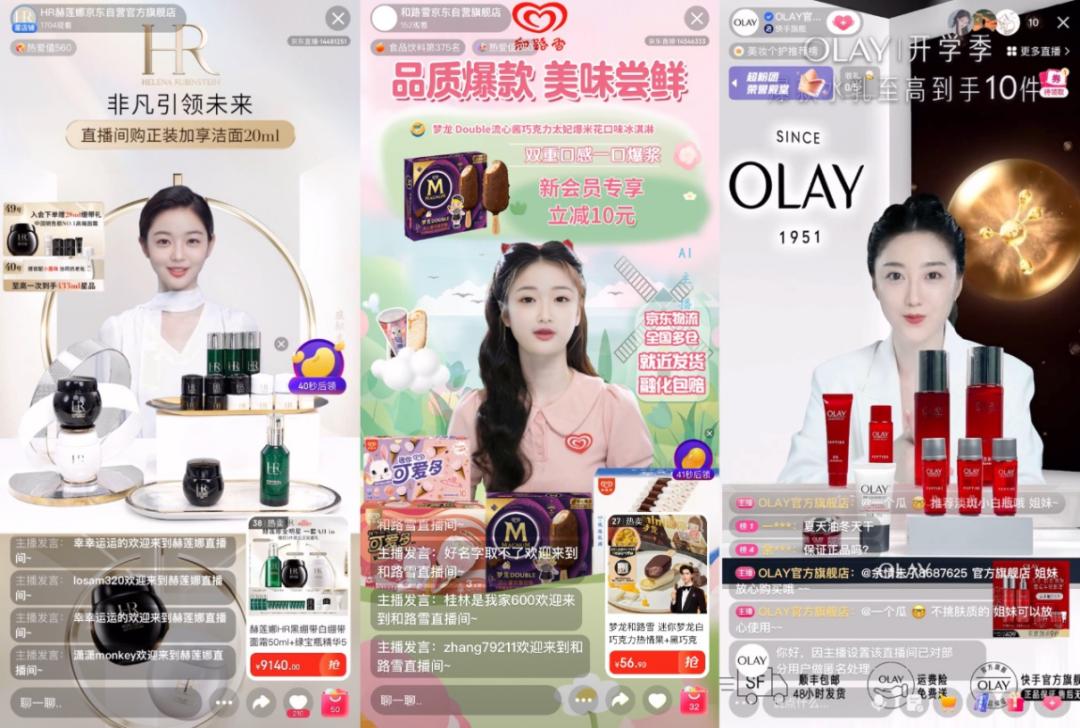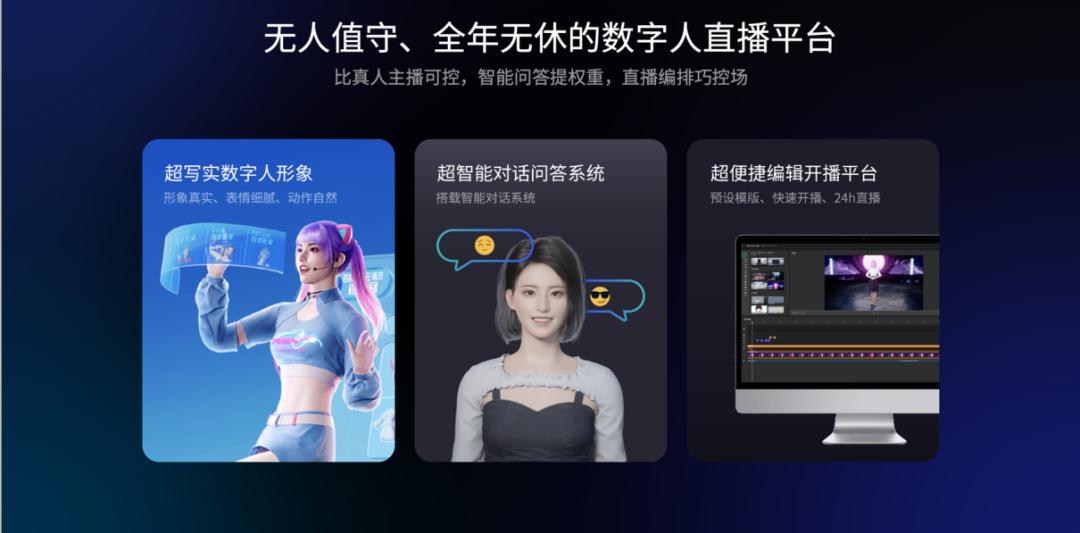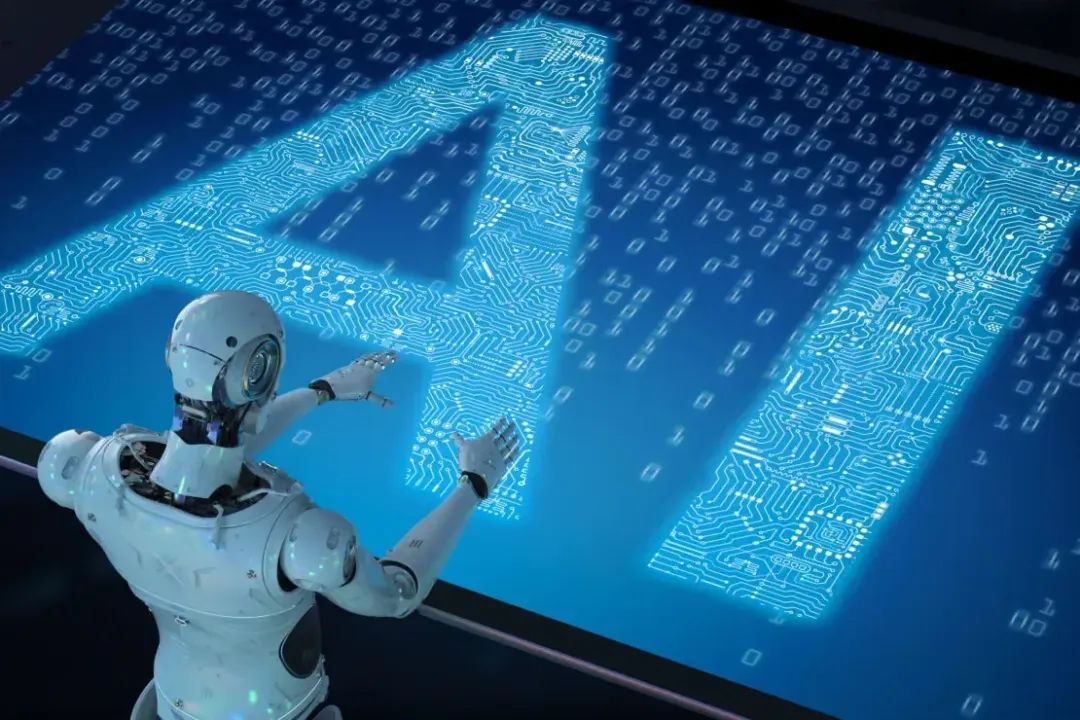How Many Jobs Could Be Replaced in the AI-Powered E-Commerce Era?
-
With the widespread adoption and evolution of AI technology, the empowerment of AIGC in the e-commerce industry has become unprecedentedly evident over the past two years. All platforms, brands, and merchants are actively embracing change and participating in this revolution of production tools driven by AI technology.
In the entire e-commerce industry chain, what tasks can already be replaced by AI?
During the application process, in what different forms does AI participate? What are the specific advantages and limitations of AIGC technology in practical interactions?
With the technological support from various enterprises and tech companies, AI now participates in almost the entire e-commerce industry chain, differing only in the forms of involvement at each stage.
From initial product design to pre-launch photography, modeling, copywriting, and graphic design—whether it's sales guidance, intelligent customer service, content marketing, or private domain operations... Most processes you can think of now have corresponding AI products to help e-commerce professionals work more efficiently.
In product design, simply inputting the corresponding prompts into Midjourney or Stable Diffusion can generate the desired product images—a process known as "text-to-image generation."

From jewelry and fashion design to home decoration and interior settings, the functionality of AI drawing can be applied to almost all related industries. This represents one of the earliest practical applications of AIGC products. In this context, the positions AI might replace are designers and drafters.
After creating a product, merchants still need to find shooting locations, schedule photography sessions with models, perform image retouching, select images from the results, and then either hire someone or personally refine the product description copy for the detail page... until the product is finally launched online.
This process incurs significant costs as it requires collaboration among multiple roles. Beyond photographers, models, and designers, it also involves stylists and various assistants.
With the advent of AI, parts of the work traditionally done by photographers, models, stylists, and copywriters can now be replaced by AI. With AI's assistance, these tasks can be simplified into "text-to-image," "image-to-image," and "text-to-text" processes.
Businesses can use Stable Diffusion (SD) to transform mannequin trial images into realistic model photos, requiring just one person and a computer. Previously, this technology needed pre-processing like masking or image cutting, but with the emergence of AIGC, one-click background removal has become one of its features.

Even without product images, merchants can directly use Prompt commands in SD or Midjourney to generate corresponding model try-on images, achieving "one-step completion."
In addition to the well-known Midjourney and SD, domestic companies like Meitu, Mogujie, and recently B-round funded Jirui Technology have also launched "image-to-image" products.
Jirui Technology's ECpro can generate corresponding product detail pages from product screenshots, completing tasks like product entry. PhotoMagic can generate real model images from mannequin photos, while physical products can be instantly cut out. Mogujie's WeShop and Meitu's WHEE and Meitu Design Studio also offer similar functionalities.
Meitu's product Kaipai has expanded its features into the short video domain, not only generating marketing copy with one click but also creating digital human hosts for video recording, AI-powered smart editing, and one-click short video packaging.
AI digital human hosts are currently one of the most widely applied AI technologies in the e-commerce sector. With the emergence of digital human hosts, roles that may be replaced include hosts, assistant hosts, and live-streaming operations.
AI digital human hosts can automatically explain products and respond to questions based on keyword prompts. These digital hosts won't 'collapse,' don't need rest, and can broadcast 24/7 without interruption once purchased.
Compared to the hefty startup costs of traditional live-streaming rooms, which can easily exceed hundreds of thousands, AI hosts priced at ¥2,000 per month save merchants significant costs in setting up live-streaming rooms. Many small and medium-sized merchants, brand merchants, and even some MCN agencies have already started using digital human hosts.


An MCN executive once told media that major brands like Helena Rubinstein are embracing change by using AI anchors, and store broadcasters don't possess strong irreplaceability. He predicts that within the next 3-5 years, 30%-50% of store broadcasters will be replaced by AI anchors.
On the manufacturer and product side, international companies like D-ID and HeyGen can generate digital humans and short videos from a single photo, along with providing voiceovers based on text.
Domestic companies, both large and small, are also deploying their own AI short video and digital human products. Besides BAT (Baidu, Alibaba, Tencent), companies like NetEase, 360 Group, and Xiaoice have launched their digital human products or generation platforms. For example, Baidu Intelligent Cloud's Xiling platform can generate automated live-streaming digital humans that can perform built-in actions, with lip-syncing and emotions adapting to text and voice inputs.

Image source: Baidu
Beyond digital live streaming, AI can engage in various e-commerce tasks such as intelligent shopping guidance, customer service, private domain operations, procurement, and brand investment analysis.
Currently, platforms like Taobao, Tmall, JD.com, and Pinduoduo have already implemented intelligent customer service in practical applications.
Some cross-border e-commerce merchants have adopted an intelligent customer service product called "Timely Language," which has helped resolve 75% of user inquiries while increasing the conversion rate of manual chat orders from 15% to over 30%.
AI shopping assistants can recommend products based on user needs, gaining insights into authentic user profiles during active searches and interactive Q&A sessions to enhance conversion rates.
AI also participates in advertising campaign planning and design, creating creative visuals and short videos. It assists merchants in private domain operations by answering user questions in merchant communities through chatbot formats, guiding customers to place orders, thereby "reducing the burden" for merchants.
From product design to live-stream marketing, from assisting user decision-making to advertising analytics, AI's involvement in the e-commerce sector has become "extensive."
So, as a new 'production tool' for e-commerce professionals, what is the core value of AI beyond functional expansion?
AI is an ideal tool for e-commerce practitioners to achieve 'cost reduction and efficiency improvement.'
AIGC products typically adopt a one-time purchase or subscription-based payment model. After a single payment or payments based on different standards (annual, monthly), users can efficiently produce content and use it without restrictions. When dealing with repetitive, mechanical, and partially creative tasks, AIGC technology can significantly free up individual energy.
Especially when this technology is combined with different fields and scenarios, it plays a role in various forms, such as AIGC + images, AIGC + text, AIGC + short videos, AIGC + live streaming... The scalability of AIGC technology is surprisingly impressive.
AI large models don't get 'tired' and can quickly adjust their outputs based on feedback, with rapid responsiveness and flexible adjustments being among the advantages of AI technology applications.
After the reduction in usage costs, the expectations for the conversion rates of AI-generated content have also decreased. For example, when the cost of digital humans is one-tenth of the original, achieving just one-tenth of the conversion rate of human hosts becomes acceptable.
However, according to feedback from some small and medium-sized businesses, the cost of digital human livestreaming is only one-twentieth of human hosts, while AI conversion rates can sometimes reach half or even match human performance, demonstrating outstanding conversion capabilities.
One F&B brand utilized digital human hosts across three livestream rooms simultaneously during this year's 618 shopping festival, reallocating the saved costs to traffic acquisition. As a result, the daily GMV of the three livestream rooms saw nearly five times growth compared to using human hosts.
A creative planner from an advertising agency mentioned in an interview that compared to proposals from designers, AI-generated advertisements can save 30% in costs and 70% in time, making them highly suitable for urgent shopping events with tight deadlines.

Source: Zhong Xue Gao's official WeiboA Weibo user "Lang Zhu Hui Tou" working in the e-commerce industry once shared a price list from a model photography studio. Photography and modeling fees accounted for the majority, totaling over 35,000 RMB for just an 8-hour shoot.
He mentioned in his Weibo post: "This year, we no longer need to spend 40,000 to 50,000 yuan per day hiring photographers and models to shoot clothes. (AI technology) is completely sufficient for our needs."
AI products can help many small and medium-sized businesses enter the market smoothly and assist large brands and enterprises in reducing costs. In the current context of rising customer acquisition and advertising costs, e-commerce professionals encountering a tool that can "reduce costs and improve efficiency" is almost "a rare find."
However, in practical applications, AI is not perfect. AI and large AI models can sometimes be inflexible and lack intelligence.
The high efficiency of AI-generated content does not equate to high usability. AI-generated ideas, images, or text sometimes do not meet industry standards and require manual adjustments.
AI sometimes struggles with personalized questions, which can stem from technical barriers or insufficient data sources. These issues essentially reflect the information and "experience" gap between AI practitioners and the technology itself.
Large language models occasionally exhibit "hallucinations" - a phenomenon where AI generates fabricated, inaccurate, or untrustworthy information while deceiving itself. This can cause significant problems for users.
Another challenge is that AI systems still have considerable learning and communication barriers.
Compared to human communication (in terms of time, effort and financial costs), ordinary e-commerce practitioners without AI expertise face rigid technical barriers when interacting with AI. These barriers are difficult to overcome in the short term, often requiring assistance from professionals. While the "usage cost" may decrease, the "communication cost" might actually increase.
The limitations of AI extend beyond inadequate experience and training, sometimes arising from external constraints.
AI-generated images, text, and videos may involve copyright disputes. The appearance and language patterns of AI digital anchors might evoke discomfort or rejection among some users. Some platforms have even introduced restrictions related to AI digital entities, imposing limitations on AI's functionality and usage.
A scenario closely tied to our daily lives is the issue of AI customer service not being "intelligent" enough.
Currently, the smart customer service systems of mainstream shopping platforms can match keywords to corresponding service interfaces, handling basic functions like returns, complaints, and service progress inquiries. However, when faced with questions lacking specific keywords or corresponding entry points, they often appear insufficiently "intelligent."
Users cannot engage in genuine 'conversations' with AI customer service, often requiring human agents to resolve issues.

A frequently mentioned drawback of AI in advertising is its limited usability.
Designers interviewed by media outlets have stated that content generated by AI-assisted software still falls short of final draft quality. Some copywriting and packaging designs even violate advertising laws and design standards, posing certain risks. The final output ultimately requires human review and adjustments before being put into use.
Overall, AI technology can indeed achieve the "cost reduction and efficiency improvement" effects expected by businesses, MCNs, and other entities during its application. However, it also has shortcomings such as inflexibility, lack of intelligence, and certain technical barriers.
In the current era where AI technology is widely applied, some functional deficiencies may be resolved in the short term. However, other macro-level issues involving ethics, technical barriers, and acceptance will require further technological development before they can be addressed.
Finally, AI technology empowering the entire e-commerce supply chain has become an industry norm. AI technology can serve as a powerful tool for small and medium-sized businesses to quickly enter the market and can also help some cross-border e-commerce businesses get started more effectively.
For most job positions, AI currently plays an auxiliary role rather than a complete replacement. Many tasks still require human flexibility and experience to handle.
In today's world where AI technology is increasingly advancing, how to strengthen one's core competitiveness while quickly learning and utilizing AI to maximize its value may become a long-term challenge for e-commerce professionals.
